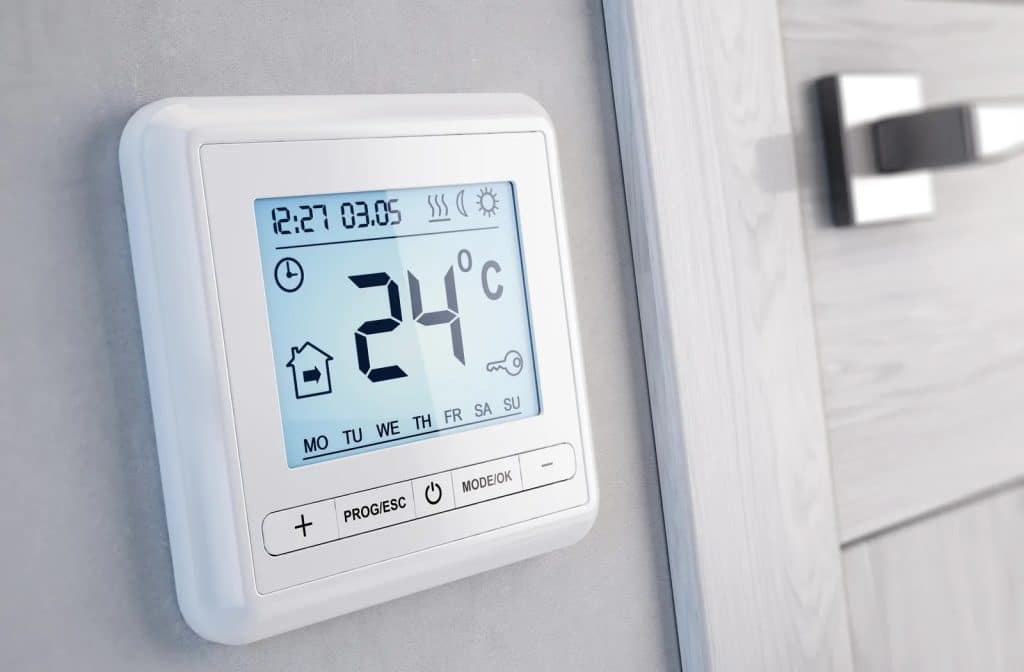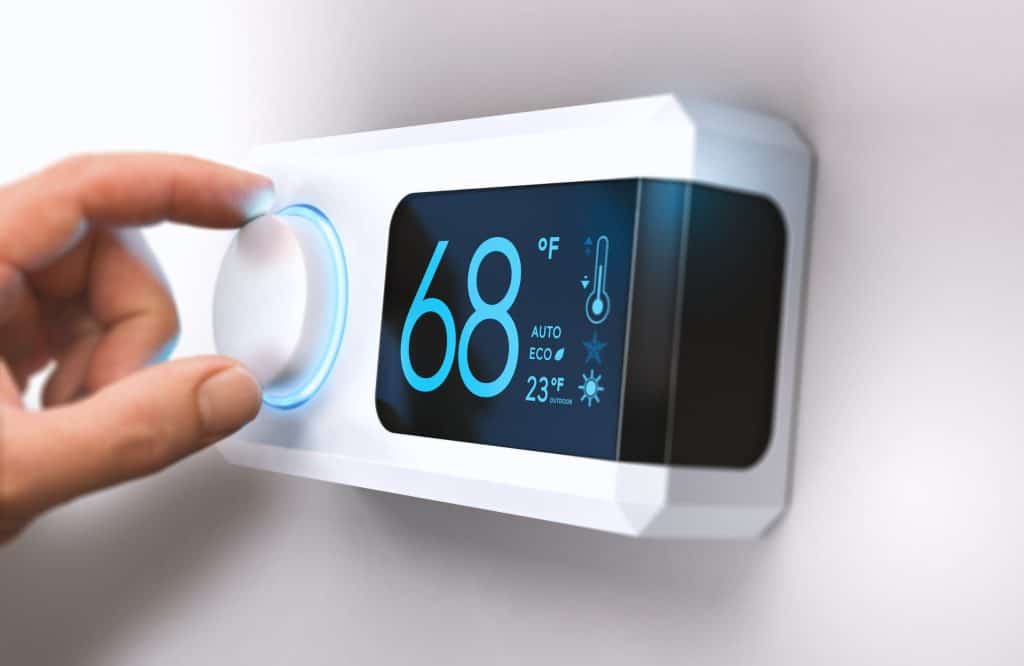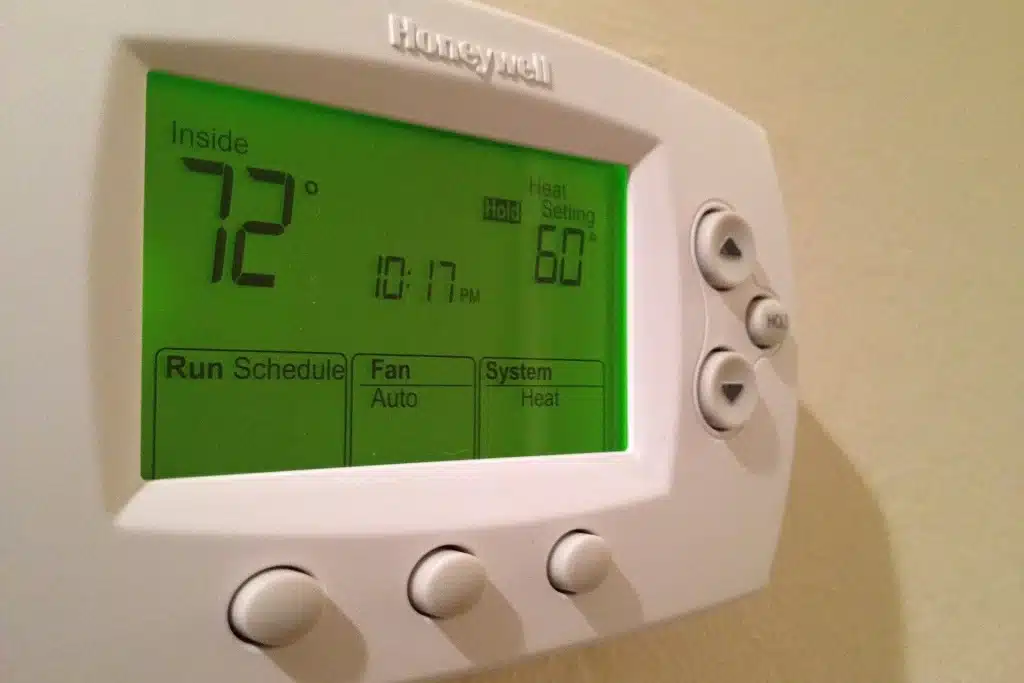As winter loosens its grip and spring begins to unfurl its vibrant colors, the shifting seasons bring about changes not only in outdoor scenery but also in indoor comfort. With temperatures oscillating between chilly mornings and balmy afternoons, the question of what temperature to set the thermostat becomes increasingly pertinent. In this guide, we delve into the intricacies of springtime temperature management, exploring optimal thermostat settings and strategies to ensure comfort and energy efficiency throughout the season.
Understanding Spring Temperature Dynamics

Spring is renowned for its variability, characterized by fluctuating temperatures and unpredictable weather patterns. Mornings may dawn with a crisp chill, gradually yielding to the warmth of the midday sun. Such temperature variations pose a challenge when it comes to maintaining indoor comfort. While the instinct may be to set the thermostat at a constant temperature, adapting to the changing outdoor conditions can optimize comfort levels while minimizing energy consumption.
Factors Influencing Thermostat Settings
Several factors warrant consideration when determining the ideal thermostat setting for spring. These include personal comfort preferences, outdoor temperature fluctuations, humidity levels, and energy conservation objectives. Striking a delicate balance among these variables is key to fostering a comfortable indoor environment without unduly burdening your heating, ventilation, and air conditioning (HVAC) system.
Optimal Temperature Parameters
In spring, the recommended temperature range for indoor comfort typically falls between 68°F and 72°F (20°C and 22°C) during the daytime. Within this range, occupants can enjoy a pleasant indoor climate without subjecting the HVAC system to excessive strain. However, it’s crucial to adjust the thermostat dynamically based on outdoor temperatures and individual comfort preferences.

Harnessing Programmable Thermostats
Programmable thermostats emerge as valuable tools in the quest for efficient temperature control. These devices enable users to schedule temperature adjustments throughout the day, aligning indoor conditions with occupancy patterns. By programming lower temperatures during periods of absence or sleep and slightly higher temperatures when occupants are present, programmable thermostats facilitate energy savings without compromising comfort.
Fine-Tuning Thermostat Settings
Achieving optimal comfort in spring necessitates a nuanced approach to thermostat settings. Rather than adhering rigidly to preset temperatures, consider making subtle adjustments based on daily weather forecasts and personal comfort thresholds. During cooler mornings, a slightly higher thermostat setting may be warranted to offset outdoor chill, while warmer afternoons may call for a lower setting to prevent overheating.
Supplementary Strategies for Spring Comfort
In addition to judicious thermostat management, several supplementary strategies can augment indoor comfort during the spring months. Utilizing ceiling fans to circulate air effectively redistributes heat, promoting uniform temperatures throughout the living space. Furthermore, sealing any drafts around windows and doors and ensuring adequate insulation can mitigate heat loss and enhance energy efficiency.
Embracing Natural Ventilation
Spring’s mild temperatures and gentle breezes present an opportune moment to embrace natural ventilation. Opening windows strategically during the day allows fresh air to permeate the indoor environment, reducing reliance on mechanical cooling systems. However, exercise caution when outdoor temperatures soar or pollen levels are high, as these conditions may compromise indoor air quality and exacerbate allergies.
Monitoring Indoor Humidity Levels

Humidity plays a pivotal role in overall comfort and indoor air quality. In spring, fluctuating humidity levels can exacerbate discomfort, leading to clammy conditions or excessive dryness. Employing a hygrometer to monitor indoor humidity levels empowers occupants to adjust the thermostat and utilize supplementary humidifiers or dehumidifiers as needed, maintaining an optimal balance for health and comfort.
Conclusion
Navigating the nuances of springtime temperature control requires a multifaceted approach that encompasses dynamic thermostat settings, supplementary comfort strategies, and an awareness of environmental conditions. By adhering to recommended temperature ranges, harnessing the capabilities of programmable thermostats, and implementing supplementary measures such as ceiling fans and natural ventilation, occupants can cultivate a comfortable indoor environment while promoting energy efficiency. Moreover, vigilant monitoring of indoor humidity levels ensures optimal comfort and air quality throughout the transitional spring season. By adopting these practices, individuals can navigate the fluctuations of spring with ease, enjoying the bounties of the season while maintaining a cozy retreat within their homes.






GIPHY App Key not set. Please check settings